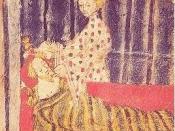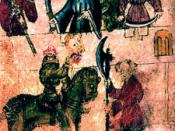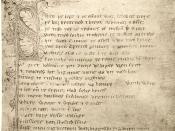Although coming from widely differing contexts, the heroes of the two medieval texts, Sir Gawain and the Green Knight and Everyman, bear some remarkable similarities. Of course, one of them is a great medieval hero, the brightest star in King Arthur's constellation, while the other is a common man, a representative of the mass, they show some common traits when confronted with death in their respective situation. More precisely, these two characters from middle English Literature are similar in three ways: both are true Christians or consistently attempt to be so; they react identically when confronted with the fear of death; and neither of them are perfect or idealized figures. This paper would attempt to bring out the significant similarities between these two characters of Middle English literature; similarities that are often overlooked due to the vast disparity in their respective milieu and station in life.
Both Everyman and Sir Gawain go on an allegorical quest, one in which there virtues will be tested and their vices measured.
Both Sir Gawain of the Middle English Arthurian Romances and Everyman of the Moralities operate within the basic Christian superstructure of virtue and vice and therefore to claim the status of a hero both of them must display the heroic qualities sanctioned by Christianity. For instance, Sir Gawain is one of the "most noble knights known under Christ" (I-line 51). He is devout and chivalrous: "that [knight] of courage ever-constant, and customs pure, / Is pattern and paragon, and praised without end:/ Of all knights on earth most honored is he" (II-912-15). He has the image of the Holy Virgin imprinted in his shield. He is brave not because courage is a heroic virtue but because he puts his faith in God. Similarly, Everyman, the hero of the morality play is meant...


